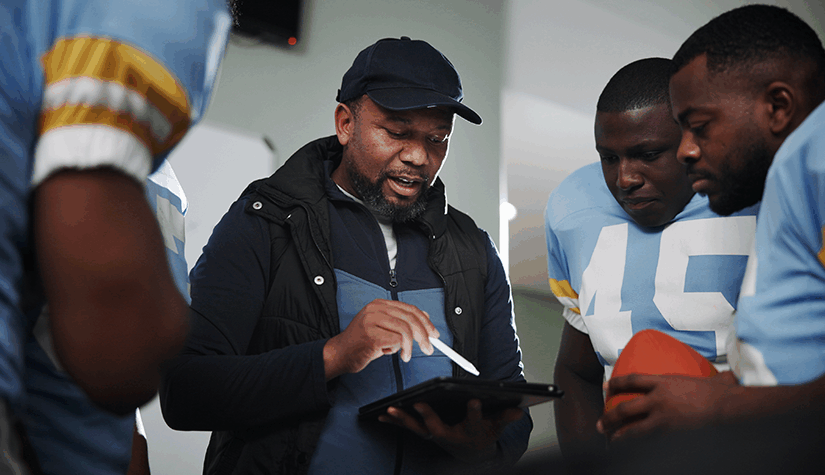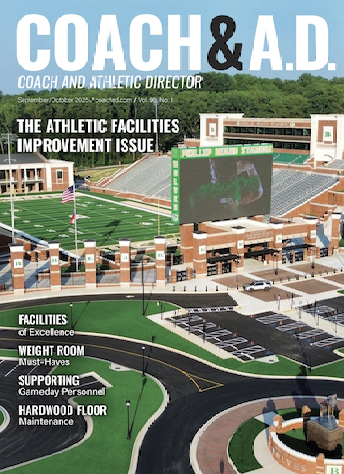Advice on building sustainable athletic facilities
Ask anyone what they’re doing to make their sports facility more sustainable, and they’ll likely shrug and mumble something about recycling on game day.
The truth is, however, that true sustainability is a complex concept. It goes beyond deciding which bin should be used for a plastic pop bottle or whether red Solo cups are recyclable. (Spoiler alert: They aren’t.)
A dictionary will tell us that sustainability is the avoidance of the depletion of natural resources, a definition with the amazing ability to sound both ridiculously complex and incredibly easy.
The good news is this: Sustainability is within the reach of everyone willing to make changes at whatever level is possible in any given situation and at a wide range of price points.
Sustainable design
Sustainability can start, literally, from the ground up in the planning and design phase of sports facilities. The avoidance of the unnecessary removal of mature trees or native vegetation, for example, is a sound practice. Not only do such plantings add oxygen to the air, provide shelter and cover for wildlife, and help to prevent erosion, but they also help to moderate the microclimate.
Excessive amounts of exposed pavements and building masses contribute to localized rises in temperature, an effect often referred to as the “urban heat island effect,” though it is by no means limited to urban areas.
Orientation: Outdoor facilities (tennis courts, for example) should be oriented to the sun. This will maximize playable hours and make the most of a facility. A court is a poor use of land, as well as a poor investment, if it goes unused because players don’t want to have to squint into the sun.
Water use: While the topic of water use is one of the most important in sustainability, sound water practices can be implemented at almost any phase of a project. Some examples are as follows:
- Installation of low-flow sink faucets, showerheads and toilets.
- Use of greywater in irrigation or cooling systems of fields.
- Paying close attention to irrigation systems to ascertain that water is directed only onto the field and not being wasted by spraying onto adjacent structures, such as dugouts, bleachers or tracks.
Sustainability in materials used
Construction professionals are responding to consumers’ wishes to increase the sustainability of projects. A sampling of the steps being taken is as follows.
- Use of recycled or repurposed materials: New buildings may include recycled materials to increase their eco-friendliness. One of the popular trends in construction is the use of reclaimed or repurposed wood planks (generally from dismantled buildings and other structures) for flooring in office and meeting room areas. (Note: This type of wood is not suitable for gymnasium flooring.)
- Bird-safe glass: Increasing attention is being paid to having glass treated to avoid bird strikes. UV-reflective coating and acid etching of glass make it more visible to birds.
- Other aspects of eco-friendly buildings include solar panels, high-performance insulation, efficient HVAC systems, and the use of daylighting and natural ventilation.
Additional steps being taken to ensure sustainability in sports facilities
Eco-friendly lighting
One of the leading ways to increase sustainability in any sports facility is by upgrading the
lighting to energy-efficient (and more aesthetically pleasing) LED. The adoption of LED lighting has become far more widespread; systems are coming down in price and increasingly are replacing the older fluorescent (T5HO) or high-intensity discharge (metal halide) fixtures.
Typically, LED lighting can provide 50% or more in energy savings versus previous technology. In addition, LED lighting will require less maintenance. A lifecycle cost analysis (LCA) can determine the effectiveness of a potential LED lighting retrofit, and should take into consideration capital costs, maintenance costs and operations costs.
One common attempt to avoid the use of new resources with new LED field lighting is to install it on existing poles. Discuss with your lighting vendor the condition, height and positioning of the poles, with an eye to whether these will be appropriate for the new LED system.
One important recommendation from lighting vendors is to avoid purchasing an inexpensive system that is advertised online. This equipment often has limited functionality and low product manufacturing standards, leading to a need to replace the whole system sooner rather than later.
Additionally, many inexpensive systems are manufactured outside of the country and may not offer the buyer any customer support once the product arrives. The wiser investment is made by purchasing a domestically manufactured sports-specific system that is backed by a reputable company with references from users who can speak to the customer service experience before, during and after installation.
Recycling of turf
Many schools have moved to synthetic turf fields to handle the uptick in the number of sports programs being offered. The good news: When fields come to the end of their useful life, the surface no longer has to be taken to a landfill.
» ALSO SEE: 13 tips to add to your gym floor maintenance checklist
Specialty contractors have developed equipment and methods to extract infill from a school’s aging synthetic field and to store it for use by installers putting in the next field. At the same time, there are companies on the market specializing in reselling used turf, either whole or in segments, for new purposes.
A qualified field contractor may also be able to determine whether other components of the field, including the shock pad, drainage system, and base, can be reused, keeping them from being disposed of, and bringing additional cost savings. Finally, full surface recycling is moving into U.S. markets. Expect to hear more about these programs as time goes on.





